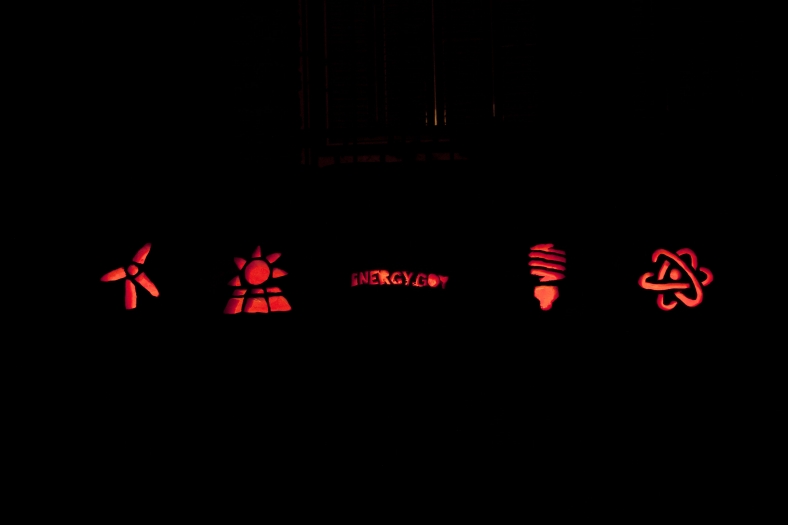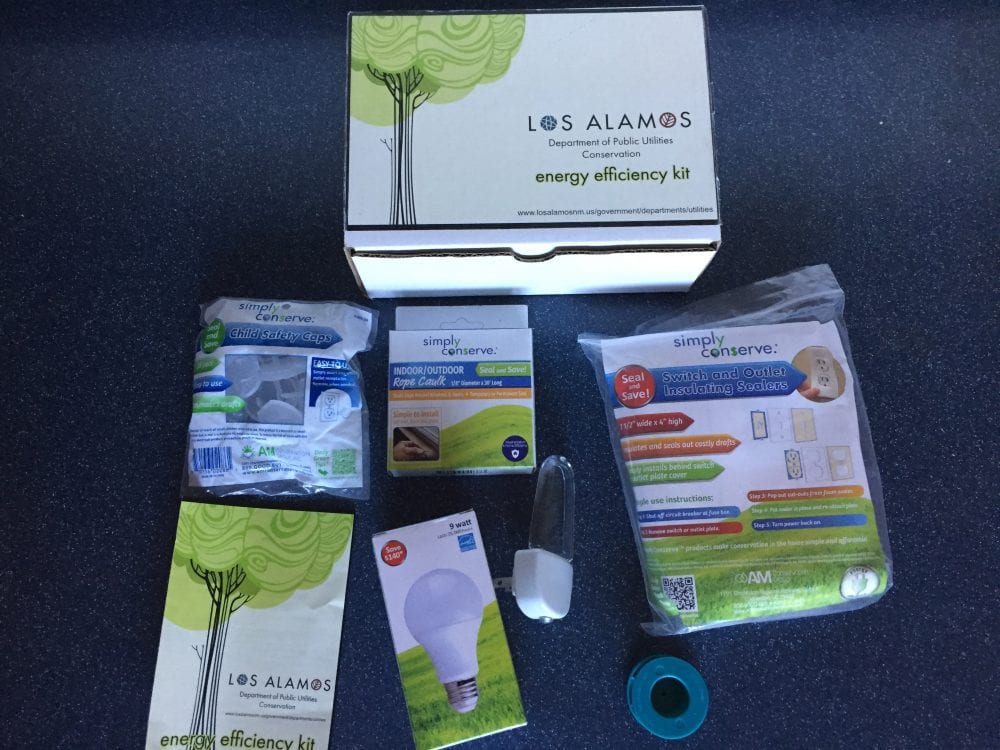

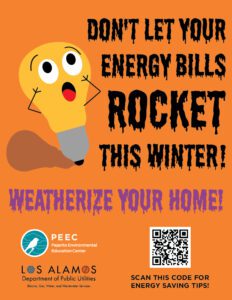
By Elizabeth Watts
With cold weather arriving, it’s time to think about ways to conserve energy this winter. PEEC is teaming up with the Los Alamos Department of Public Utilities to bring you some tips on how to winterize your home so you can be comfortable while also saving energy and money. The Department of Public Utilities has free energy efficiency kits available to help save energy. If you are interested in getting one of these, email Elizabeth at elizabeth@peecnature.org to arrange a time to pick one up!
Winterization projects are usually quick fixes you can make to your home. Weatherization is bigger projects such as replacing your windows or improving the insulation in your home. These can make a big difference, but also take more time and money. The Department of Energy has a helpful list of things you can do in a day, in a week, in a month, and in a year.
Thermostats
A quick and easy place to start is at your thermostat. The recommended temperature for during the day is 68 degrees F. If this is a little chillier than your household is used to, start by reducing the temperature one degree from your normal. Give everyone a couple of weeks to adjust, and then reduce it by another degree. If you have kids who complain about being cold, have them put on a hat or run around outside!
A big difference you can make is by turning down the set temperature on your thermostat 7-10 degrees at night. This can save you up to 10% on your energy bills. If you have a programmable thermostat it is easy to set it to turn the furnace down automatically an hour before bedtime, and to come up again 30 minutes before you get up. If you leave your home for work or school, you can also program the thermostat to turn the furnace down when you leave and up before you get home. If you don’t have a programmable thermostat, you can still adjust the temperature manually. You just need to remember to do it!
You might also consider upgrading to a smart thermostat. These adjust the temperature automatically to your schedule and preferences. Some of them come with sensors to tell when a room is occupied or what the temperature is in another room. This can be helpful if you have a room that is warmer or chillier than the one with the thermostat in it. Some of them also connect with your phone and turn on the furnace when you are driving home! There are many different models of smart thermostats, so be sure to check out your options before investing in one.
Windows and Doors
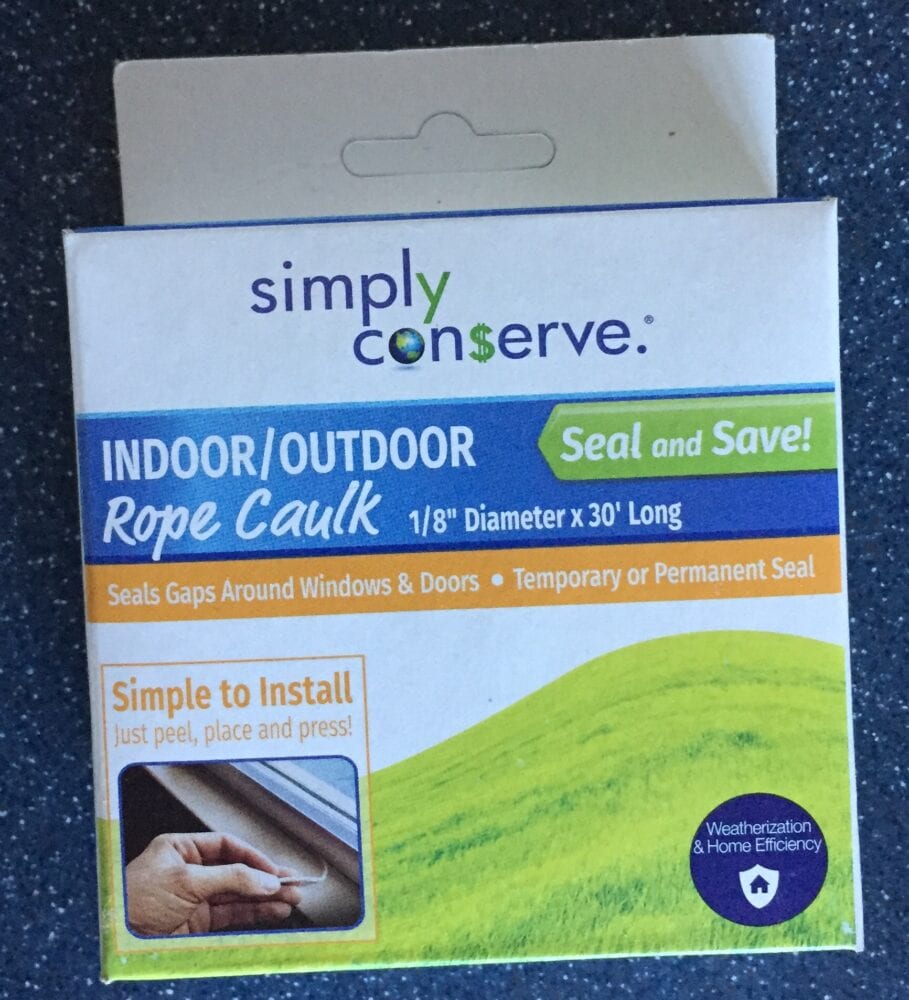
Next, check your windows and doors. One very simple thing to do is open your window coverings when the sun is shining on your windows to take advantage of passive solar heating. Then, close them at night to reduce any heat loss through the windows.
The next step would be to seal any leaks around your windows or doors. If there is air coming in around the edges of the windows where the glass meets the frame, you want to seal them. The DPU energy efficiency kits have a roll of rope caulk that you can use to seal small leaks, or you can use regular caulk and a caulking gun. Just make sure the place you are sealing is clean and dry before applying the caulk.
If you have a leak where the window frame slides, you need to replace the weatherstripping. There are many different types of weatherstripping available so look carefully at what is already there so you can replace it with a similar type. Doors also have weatherstripping around them. Look around your door when the sun is shining directly on it and see if any sunlight is shining through. If it is, then you need to fix the weatherstripping. If you need to replace the weatherstripping, check out our local hardware stores before ordering online. They have a great variety of weatherstripping, and great people to give you advice!
Outlets
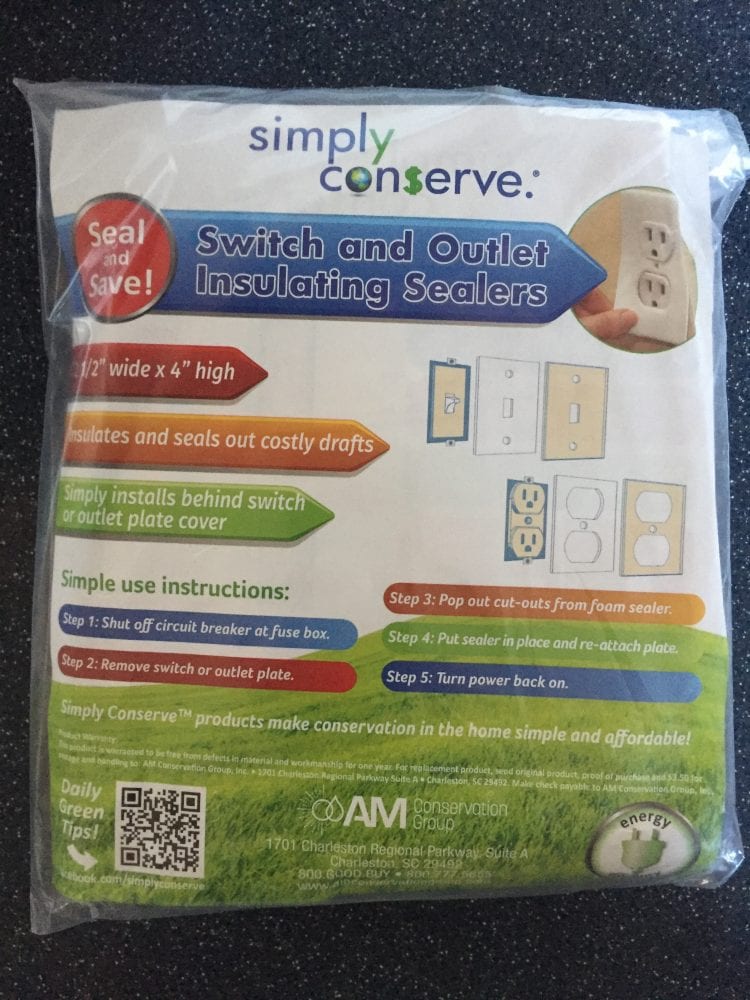
Another place cold air can leak into your home is through the outlets or light switches on any outside walls. The energy efficiency kits include foam gaskets that are easy to install with just a screwdriver. Also, check any places where pipes come through the wall from the outside and insulate around these with rope caulk or expanding foam.
Attic
If you have an attic, you also want to check the attic access to make sure that warm air is not escaping through it. You can use weatherstripping around the edges, or you can buy a cover that goes inside your attic over the access point.
Furnaces and Fireplaces
Another important item to check is your furnace. Whether you have a forced-air system, or a hot water heat system, you want to maintain it so that it works efficiently. If you have a furnace filter, you should change it regularly. How often depends on several factors such as pets in the house, if any household member has allergies or asthma, the type of filter you use, and how many people are in the home. In the energy efficiency kits, there is a filter whistle that you can install on your filter. When the airflow drops, it will make noise to let you know it is time to change the filter.
If you have radiators, make sure to keep them vacuumed and clean. You can bleed any extra air out of the radiator to make it work more efficiently. If you have a fireplace or wood-burning stove, make sure it is clean and working properly. Keep the damper closed when you are not using the fireplace to reduce heat loss as well. Here are more tips to keep your wood-heating appliance working efficiently.
Check smoke detectors and carbon monoxide detectors and put in fresh batteries and make sure the detectors are not expired. Carbon monoxide detectors only last 5-7 years and smoke detectors 10 years.
Light Bulbs
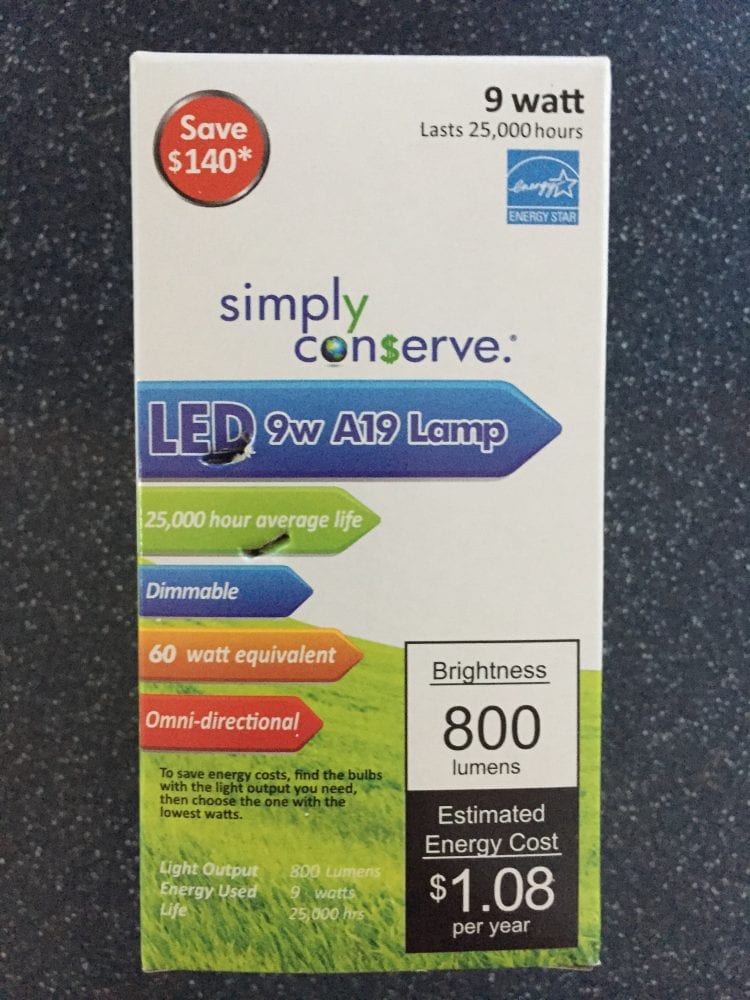
If you need to replace any light bulbs around your home, look for LED bulbs. Although they cost a little more than incandescent bulbs, they last much longer, and use less energy. There is even one included in the energy efficiency kit! If you’ve been unhappy with LED bulbs in the past, be sure to check the color range on the box. The LED bulbs available now come in different ranges, so you can pick a warmer tone or a cooler tone depending on your preference.
Outside
Outside your home, make sure any irrigation systems are readied for winter. This can make restarting them in the spring much less of a hassle! Disconnect and drain any hoses. If you have any outside lights that need to be replaced, again try to use LED bulbs to save energy. You can also now buy outdoor LED light bulbs that include a sensor. As well as saving energy, these help with light pollution at night by only turning on when needed.
There are solar-powered outdoor lights that also turn on and off with sensors. These are great because you can put them in places where you don’t already have existing outlets. There are even a wide variety of holiday solar lights available now! Here is a video of our entry in the Holiday Light Parade in 2019 that was decorated with lots of solar-powered lights!
We hope this gives you some ideas of ways to prepare for winter and save energy this year! For more ideas on how to make big changes to your insulation check out this information from the Department of Public Utilities. There is also a Conserve and Reduce page at the DPU site.
Finally, if you are looking for Halloween inspiration, check out these pumpkin carving templates from the Energy Department!
